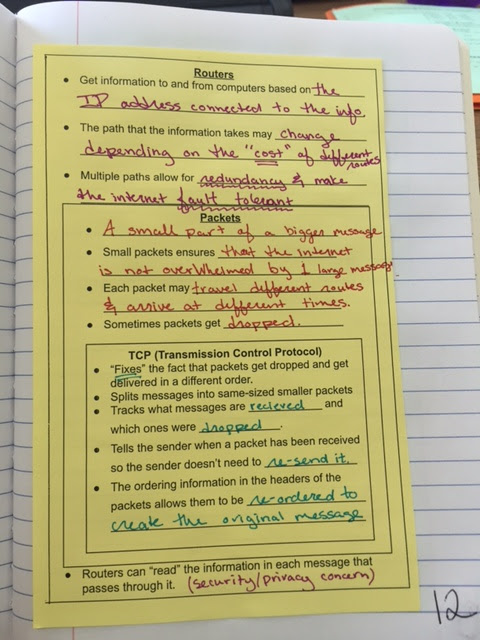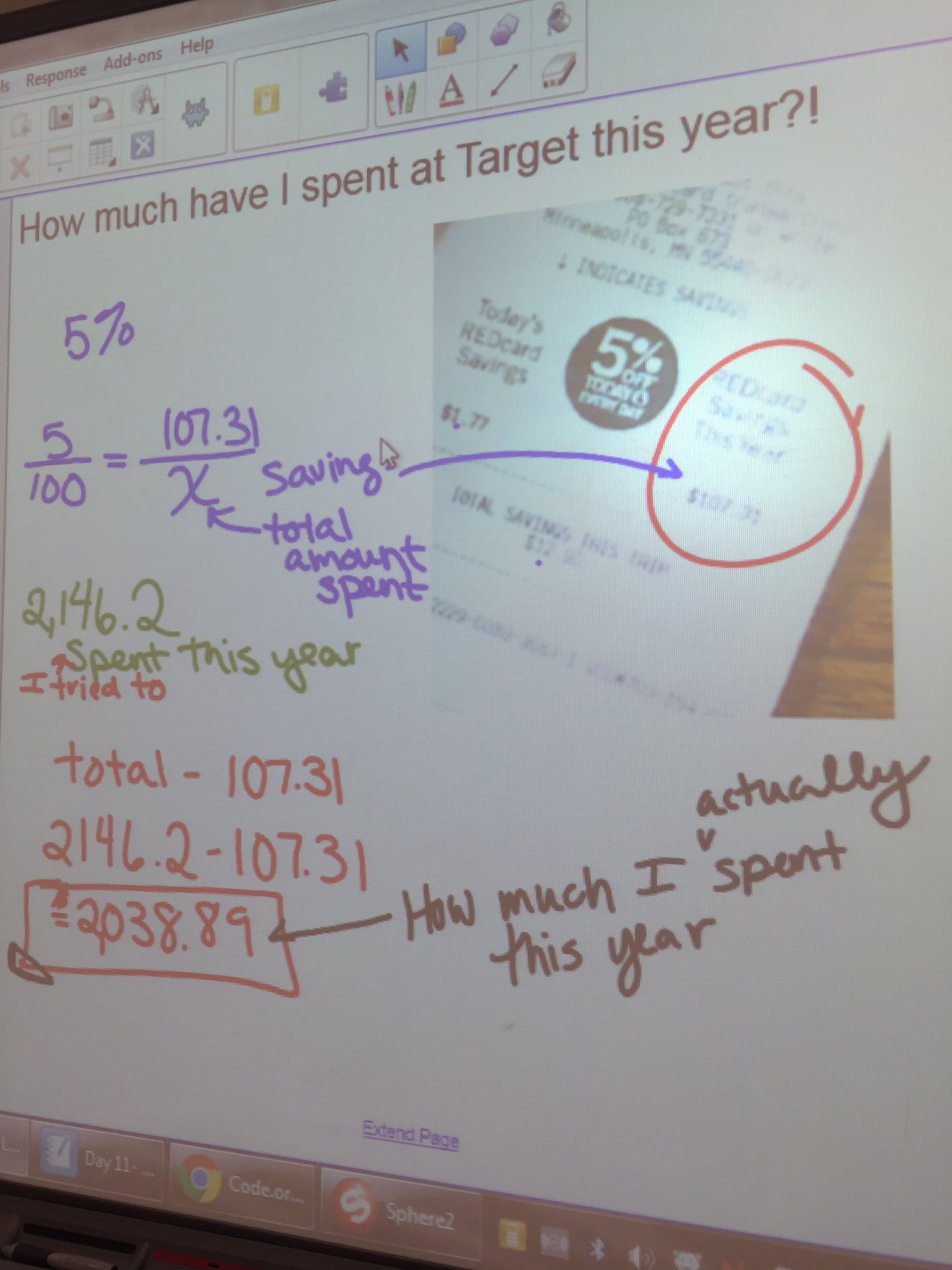I first learned about Question Formulation Technique (QFT) when I attended the Exeter conference in the summer of 2015 and then was re-introduced to it at the Knowles fall meeting 2015. QFT is a process that encourages students to ask many questions, categorize the questions, improve the questions, and then rank the importance of these questions. QFT was developed in the medical field to help patients ask better questions, however since questions are valuable in many contexts, QFT has been modified for many different contexts.
I have struggled to find a way to incorporate QFT into my teaching routines especially when the learning targets for a specific day in my geometry classroom are so specific - there is just not a lot of room for a wide open exploration of ideas. However, in my computer science classroom, part of the goals each day is to increase student interest in the topic matter. When an opportunity came along to have students visit Target HQ in Minneapolis to work with the engineers and scientists there in their technologies departments, I needed a way to get students ready to engage with these engineers. Enter QFT.
For a starting point for students, I put together a short paragraph of text from e-mails I had exchanged with my partner at Target as well as snippets from his team members’ LinkedIn profiles. Students were given 5 minutes to read the paragraph of text and then 2 minutes to summarize what they read or pull out key pieces of information in that text. From there students were put into groups of 4 students and then were given 12 minutes to generate questions. 12 FULL minutes. One person documented these questions in a google doc while (in small groups) while their team continued to ask questions. While some of these questions got off task in unproductive ways, other questions showed how students were making connections to the work Target was doing and their own learning or lives.
At the end of this time we discussed the difference between open ended and closed questions and students color-coded their questions based on these two distinctions and changed two of their closed questions to be open-ended. Finally they prioritized their questions to determine what their top 3 questions were and I sent the list of questions to my partner at Target to help him understand what my students were already thinking about before the trip.
At the field trip, students met 5 individuals who worked in different roles related to technology in Target stores. These people shared their paths to where they were (from planning on being a pilot to a nurse, etc.) and why they like their job that they have now. Then students broke up into two groups and saw new technologies Target was using (or hoping to use) in their stores to improve the guest experiences. At the end of the time, students engaged in a short brainstorming activity with the Target engineers who used the student ideas to generate more ideas. While the experience was fast, because we had gone through the QFT process before the trip, students were ready to hear what the engineers were sharing and students were ready to ask questions throughout the experience.
While I know funds and enthusiasm for field trips is limited, I do see a few opportunities to use QFT in my classroom in the future.
- In preparation for any guest speaker. Guest speakers can be a very valuable part of a course and this is especially true in my computer science class where I am trying to get students to see the many different options a career in technology has to offer. While I do my best to prep guest speakers, I should also prep my students as much as possible. Furthermore, it can be difficult to know exactly what points the speakers are going to want to touch on more than others. By preparing students, students can contribute more to the presentation and perhaps guide it with their questions. With Target, I shared the questions ahead of time with the presenters but in the future, I don’t know if that is necessary or if it takes away some of the authenticity of the experience.
- Last time I struggled with finding a “data source” for these questions to be generated from. The paragraph from e-mails I pieced together was a good start. However, the data source was a bit contrived since I picked what information was shared with students. I think I could have students look at other data sources more broadly. For example, I could have students look at a company’s website to generate questions or view a guest speaker’s LinkedIn profile. Since websites and social media are something that students are accustomed to consuming, so generating questions around these data sources may be a good practice for students to build.





















